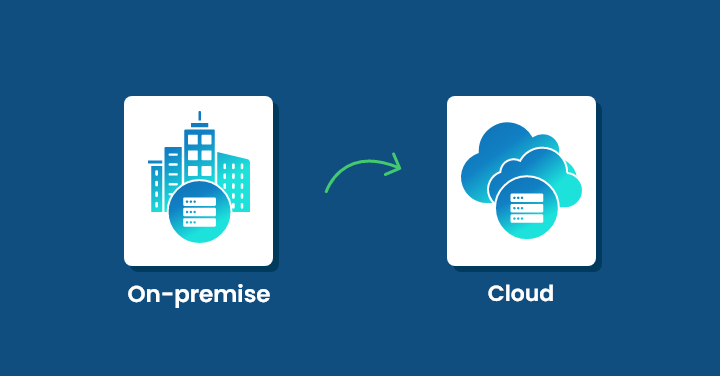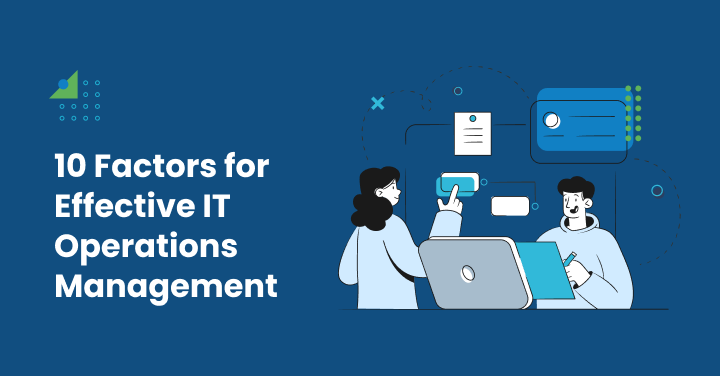IT asset discovery enables organizations to take inventory of all hardware, software, and cloud resources in their environment. Additionally, the process provides security teams with complete visibility into the assets’ availability, location, and usage.
Risk-based vulnerability management (RBVM), as the name suggests, prioritizes potential cyber threats based on their exploitability. This is helpful for optimizing resources when tackling digital attacks.
RBVM is fundamentally dependent on IT asset discovery.
Security professionals in businesses and enterprises need to know what devices and infrastructure they have to protect the organization’s data integrity. Simply put, they need to know what they have first to spot potential weaknesses.
However, improperly implemented IT asset discovery protocols can mask unmanaged or shadow devices and overlook outdated software.
And this can easily happen with modern businesses. These organizations leverage complex hybrid environments and dynamic assets to run daily operations. This architecture can make it challenging to monitor each IT resource, increasing the attack surface.
In this article, let’s look at how companies can implement IT asset discovery effectively to strengthen risk-based vulnerability management.
1. Determine Discovery Methods and Select Tools
Due to the diversity of IT assets, IT teams should invest in a variety of discovery methods. These methods complement each other to improve the breadth and depth of a company’s IT asset discovery efforts. The key ones are:
- Active scanning: Sending test signals or requests to find devices, open endpoints, and running applications.
- Passive monitoring: Uncovers the devices that block test signals or requests by capturing network traffic and activity in real-time.
- Agent-based methods: Small software agents constantly collect data, such as software details, patch status, and usage statistics, offering granular visibility.
- APIs with cloud providers: They expose metadata and running status data to track virtual machines, containers, and other serverless resources.
- Network sniffing: Traces data packets to discover unmanaged devices when they attempt to connect to the organization’s network.
After collecting information about IT assets, businesses should consolidate it all into a single source of truth. Integrating the tools used with an existing IT asset management (ITAM) system or a configuration management database (CMDB) can do the trick.
When it comes to tools, a big step up from traditional methods is leveraging agentic AI systems. Instead of periodic, manually triggered scans, these platforms deploy intelligent agents to continuously and autonomously map the entire IT environment.
By analyzing real-time network traffic and device behavior, they find and classify everything from servers to IoT devices, with minimal human oversight.
Security teams can build custom AI models by training them on their own data to detect anomalies, classify usage patterns, and identify shadow IT devices.
Moreover, agentic AI systems are more effective in discovering IoT and operational technology (OT) assets compared to traditional methods. IoT and OT devices lack standard protocols and use constrained or legacy hardware, making it difficult for IT teams to discover them.
AI models “watch and learn” traffic, behavior, fingerprints, and anomalies. This surfaces the difference between usual and unusual, revealing IoT and OT devices.
2. Define IT Assets and Objectives of Discovery
Every organization defines IT assets differently. And this definition determines how they are to be monitored and managed in the event of a cyber attack. Therefore, it’s pivotal to have a set of common definitions for each type of IT asset of the organization.
Primarily, it includes laptops, desktops, mobile devices, servers, databases, networking equipment, cloud-based resources, applications, and virtual machines.
Additionally, note that in modern workplaces, there can be sub-classifications as well. For instance, a laptop used by a team member on-site is different from one used by a remote employee.
It can be effective to have a dedicated internal knowledge base for the IT security team to ensure alignment. Professionals can learn what a remote desktop is and how mobile devices are secured in the context of their business, avoiding confusion down the line.
The next foundational step is to set goals for the IT asset discovery process. Here are some common objectives security departments can consider:
Gaining full visibility into the IT infrastructure to understand the attack surface.
Supporting regulatory compliance for frameworks such as HIPAA, PCI DSS, and ISO 27001, which require evidence of IT assets in an organization.
Quantifying risk by recognizing critical systems and assets for streamlining risk-based decision-making.
Prioritizing vulnerabilities accurately and allocating resources appropriately for threat remediation.
At the end of this step, IT security teams in businesses and enterprises should have a complete overview of their architecture and a clear approach toward strategic vulnerability management.
3. Establish Risk Criteria and Threshold
Risk criteria are the factors that label an incident or a condition as a threat. It depends on the nature of the incident or condition and its potential impact on the organization.
The nature of the incident or condition includes information like device type, exposure level, and the number of users affected. Device type depends on how businesses have classified their IT assets after the first step explained above.
Exposure level depends on the type of vulnerability (e.g., unprotected endpoints, ransomware attack, phishing threats, etc.), and the number of users refers to all the stakeholders that may be affected.
There can be various types of business impact. It can be data theft, erosion of public trust, and loss of revenue.
IT security teams should have a minimum value, or a risk threshold, for each of the aforementioned parameters. This is critical for accurate prioritization and segmentation of cyber attacks.
Consequently, RBVM becomes a straightforward process. Security professionals can use their risk criteria and thresholds to quickly find pressing issues. It also facilitates optimal resource allocation among departments in a company, resulting in faster resolution.
Note that the risk threshold is different for every business. For instance, mature brands in regulated industries like healthcare or finance may have a very low risk threshold. But startups, looking to maintain agility, can function with relatively higher risk thresholds.
Furthermore, as an organization goes through different stages or sales phases, the risk threshold shifts. It isn’t uncommon for brands to be more risk-averse at certain times while maintaining a more open approach at others.
4. Integrate Asset Data with Vulnerability Management
The first step is to connect all the discovered IT assets with centralized security systems, such as vulnerability scanners and threat intelligence platforms. This ensures every device, network equipment, and application goes through routine checkups.
Next, whenever logging a vulnerability, add contextual data. The contextual information describes the incident, nature of threat, scope of impact, devices affected, and users compromised.
It is quite helpful in training the agentic AI systems so that they can predict potential issues before they occur.
Additionally, contextual data helps the vulnerability management team to prioritize and resolve the issue appropriately. The team can also provide human oversight to the AI models, elevating the overall RBVM process.
A key aspect of the RBVM process is tagging IT assets with their owners. Every professional in an IT security team is responsible for the safety of a definite number of assets.
When a cyber threat is detected, the system should automatically notify the corresponding IT security professional. On an organizational level, this approach ensures accountability, speeds up issue resolution, and prevents active tickets from stalling between departments.
5. Implement Remediation Workflows and Continuous Improvement
Remediation workflows are procedures to contain and combat cyber threats and provide insights to prevent such attacks from happening in the future. The procedure to deal with a vulnerability depends on its risk tier.
For example, an issue on the payment portal can be on a higher-risk tier for an e-commerce business. At the same time, outdated software like laptop operating systems can be classified as low-risk tier vulnerabilities.
Businesses should create service-level agreements (SLAs) for each risk tier. This will allow team members to move quickly in the event of a breach and keep stakeholders on the same page from a compliance standpoint.
Last but not least, IT security departments must constantly enhance their IT asset discovery workflows. They can do so by tracking and optimizing key metrics, such as mean time to remediate (MTTR) and the percentage of assets included in vulnerability scans.
These metrics will help uncover bottlenecks, evaluate the efficiency of tools, and assess the efficacy of remediation strategies. It is advantageous to adopt a collaborative approach when enhancing existing processes to ensure alignment among stakeholders.
Most importantly, before bringing the changes into effect, update the SLAs for compliance.
Wrapping Up
Proper implementation of IT asset discovery is fundamental for effective risk-based vulnerability management. Clear visibility into the IT architecture in real-time is pivotal for identifying threats and areas of improvement.
The first step toward this is to create a set of common definitions for each kind of IT asset and objectives for the discovery process. Then, determine risk criteria and a threshold to facilitate vulnerability prioritization.
Third, choose a variety of IT asset discovery methods to capture the full range of IT assets in detail. After that, integrate each asset with vulnerability management systems to monitor their health.
Finally, establish remediation and resolution workflows that are supported by compliant SLAs. Continuously monitor key RBVM metrics such as MTTR and the rate of shadow IT discovery to optimize the processes down the line.






